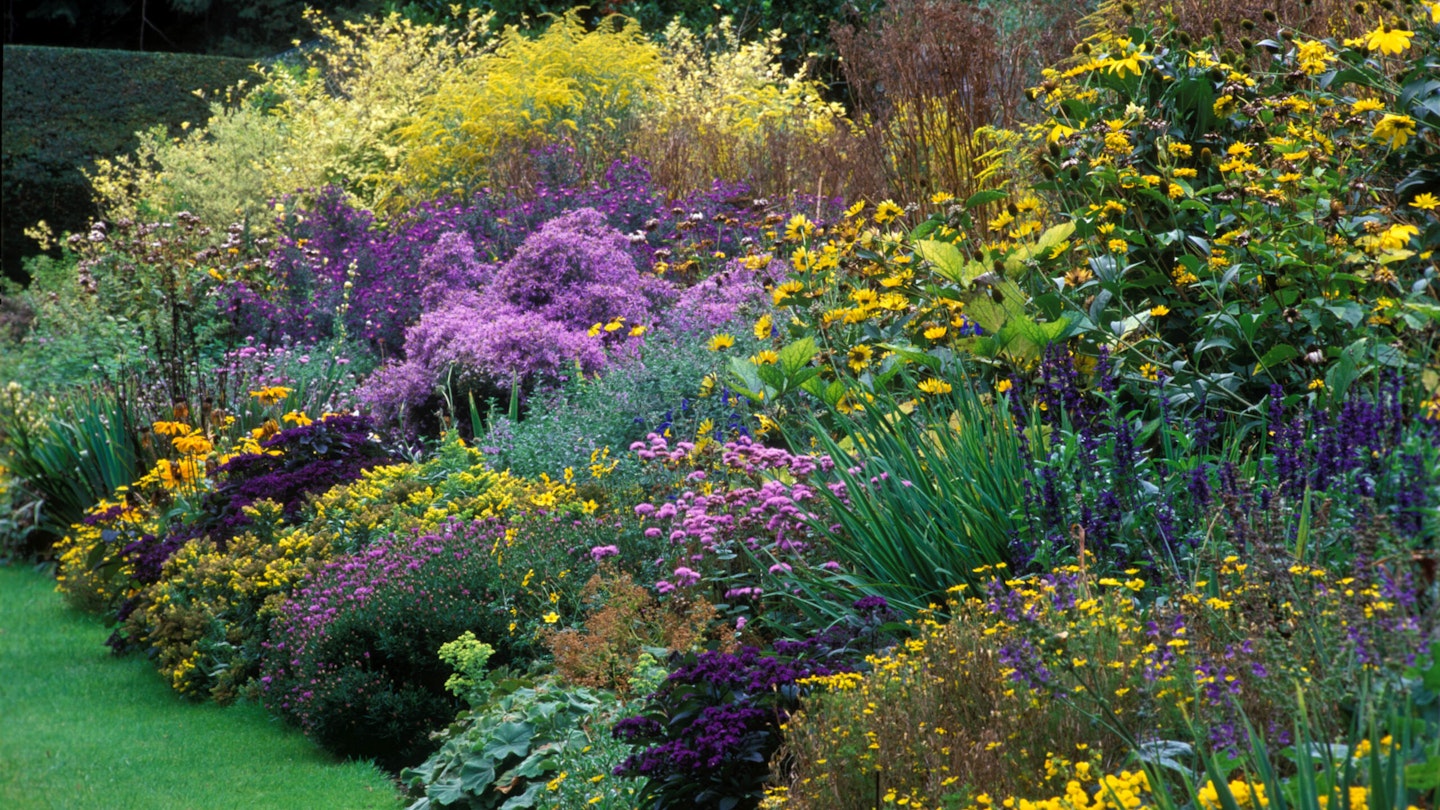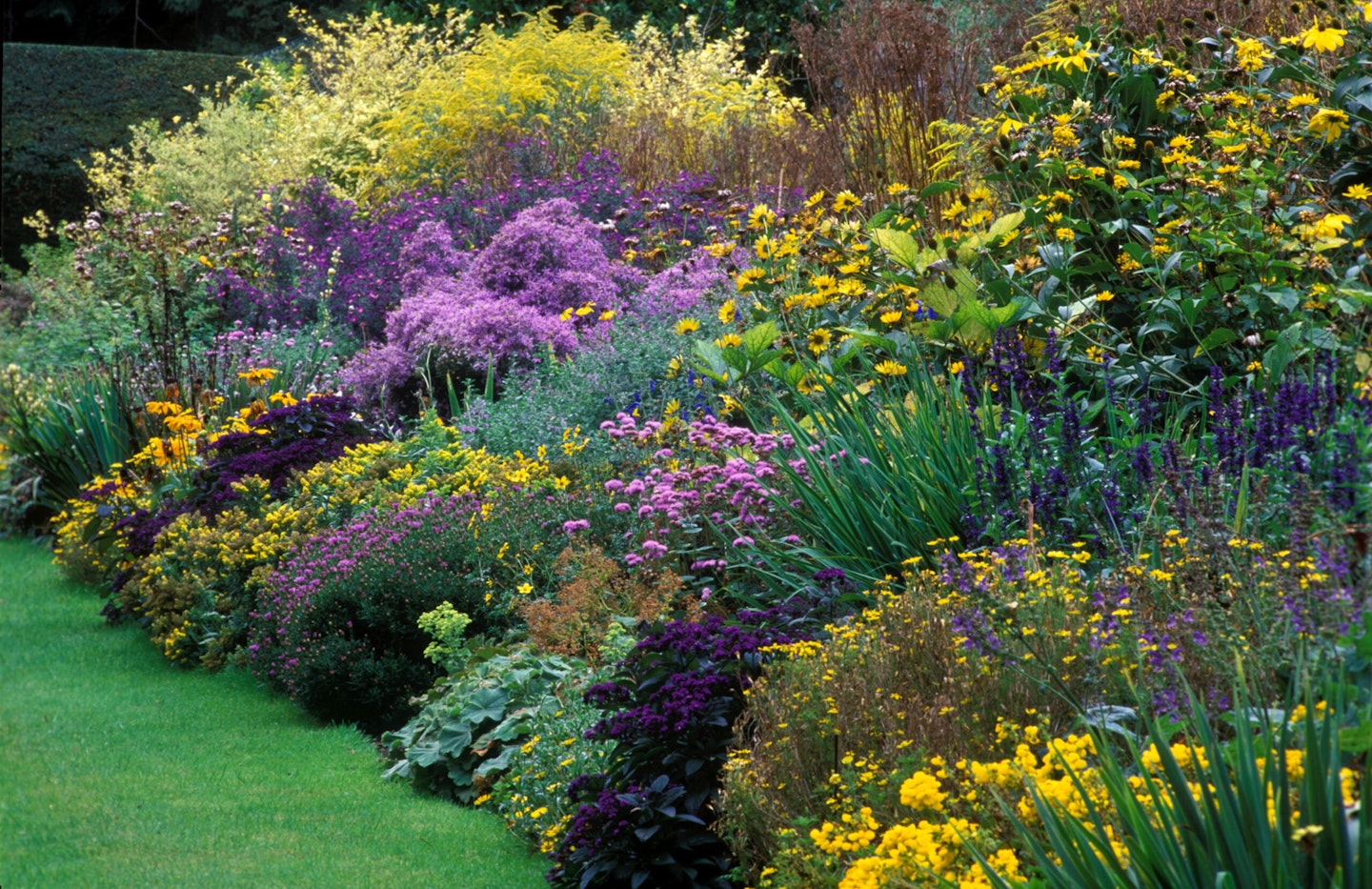
The late Beth Chatto always used to call yellow the ‘spinning thread’, because you could weave it through a border, just like a Flemish weaver using golden highlights on a huge tapestry. It seems to flicker and bounce the eye along, adding extra vibrancy to blues and purples, but also blending with oranges and warm reds. It’s the most useful colour in the garden for unifying and softening planting because it slots into the colour palette well without a hint of starkness, soothing the eye, rather like calming background music.
Spring’s early containers
Many of you will know and grow the bright yellow, January-flowering trumpet daffodil ‘Rijnveld’s Early Sensation’. This British-bred daffodil is the first tallish daff to flower, so the Cornish research station Rosewarne began using it to breed from in the 1980s in order to develop early cut flowers. One seedling is a pale, greenish-yellow trumpet daffodil, ‘January Silver’, and another was ‘Spring Dawn’, creamy white and lemon-yellow. Both are now readily available and are January flowering. You can also use the March-flowering, multi-headed ‘Moonlight Sensation’ and ‘Golden Echo’. It’s difficult to weave daffs through flower borders due to their fading foliage, so try large containers instead. Allow the bulbs to die down naturally after flowering and you should then get another two years of blooms. After that, the bulbs can be replanted elsewhere.
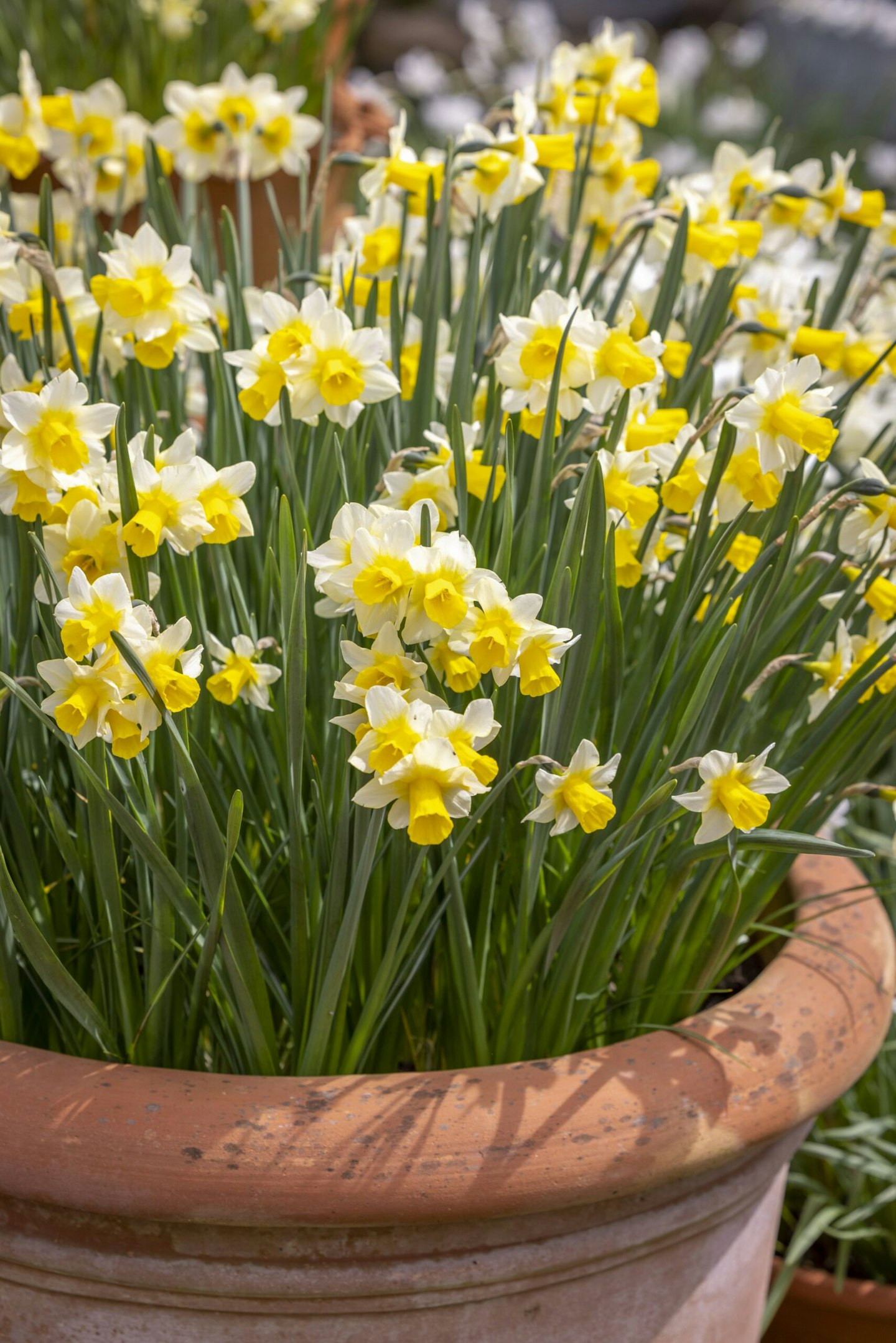
There are also compact, pallid yellow hybrid wallflowers, available as plugs. ‘Sugar Rush Primrose’ F1 will flower for many weeks in March and April, but you’ll need to plant it with a contrasting colour. The moody lilac-purple Triumph tulip ‘Negrita’ will bloom from mid-April onwards for about two to three weeks, and this combination is suited to containers and borders. It returns well if left in the border and cut back to one leaf after flowering. There’s no need to lift tulips unless you need the space.
May marvels
If you have a damper spot, globeflowers, or trollius, should do well for you. Like many pond-side plants, they need to be above the water line in winter, but like damp roots in the growing season. The greenish-yellow ‘Taleggio’ used to be a weak plant but micropropagation eradicated the virus responsible.
‘Lemon Queen’ is also being sold, but the yellow globes aren’t quite as cool in tone. It seems to be a stronger plant, so if you succeed with dark astrantias, trollius should do well planted close by. You could also sprinkle acid-yellow flowers in shade, and the biennial Smyrnium perfoliatum lights up darker shade.
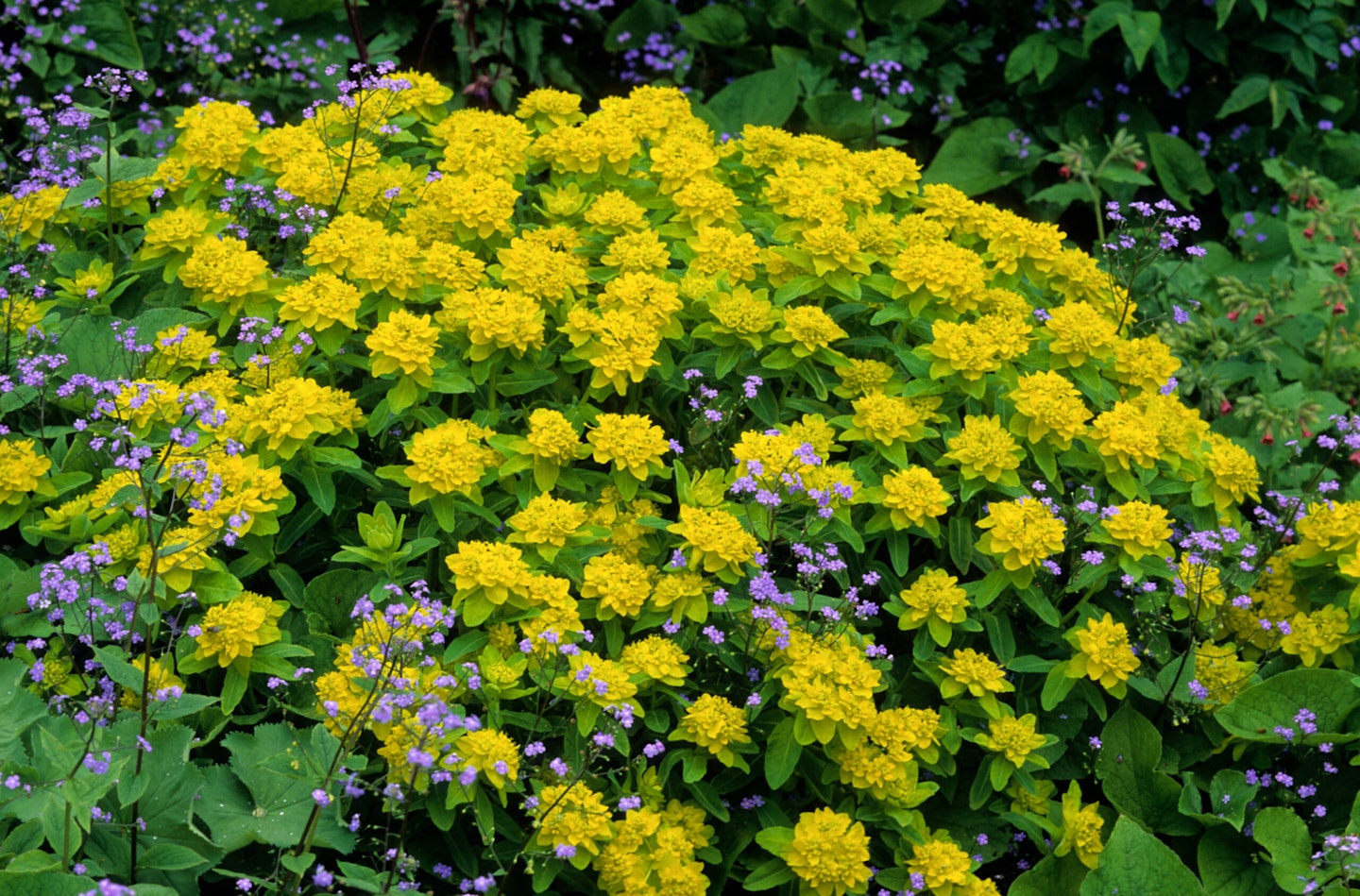
The cushion spurge Euphorbia epithymoides succeeds in shade too, and both of these acid-yellow plants go well with bluebells, grape hyacinths and scillas.
You can also create a shimmering golden veil using Milium effusum ‘Aureum’, commonly called Bowles’s golden grass. This will also self-seed. Aquilegia chrysantha ‘Yellow Queen’, a long-spurred, summer-flowering aquilegia, and Digitalis lutea, a slender, lemon-yellow foxglove with tiny thimbles, can also be used as a running thread through bright shade and both can be raised from seeds.
The shady spring border
One of the easiest shade plants is Epimedium versicolor ‘Sulphureum’, grown for its trembling wands of delicate, pallid yellow flowers held above heart-shaped green leaves. This hybrid epimedium tolerates dry shade well, although it does make a large clump. The foliage is generally cut off during early winter so the fresh flowers emerge just before the bronze-tinted new foliage.
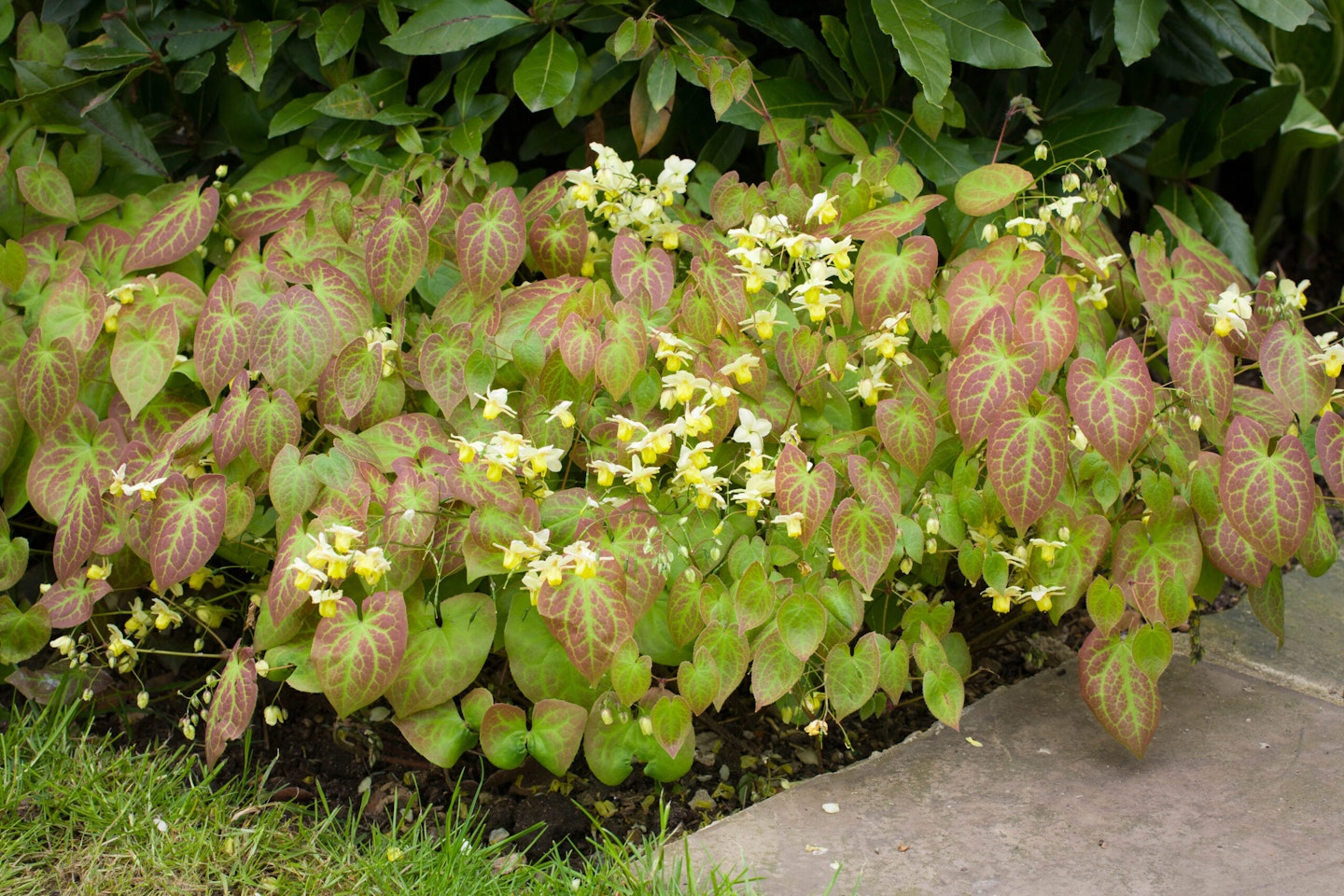
Sunny summer borders
Anthemis tinctoria ‘E.C. Buxton’ has lucid yellow daisies held above dark green filigree foliage in June. Long stems support each daisy, so this is like a series of spinning plates. Achillea ‘Moonshine’, best at a sunny edge, can be interspersed with blue perennials such as geranium ‘Spinners’, nepeta ‘Chettle Blue’ and salvia ‘Caradonna’.
You might also consider hemerocallis ‘Whichford’ as well and if there’s space, Phlomis russeliana, the Turkish sage, will smother the ground, sending up strong square stems decorated with whorls of bee-friendly, lemon-yellow lipped flowers. The 1.8m-high and more lemon-yellow scabious, Cephalaria gigantea, is one of the best cut flowers to grow.
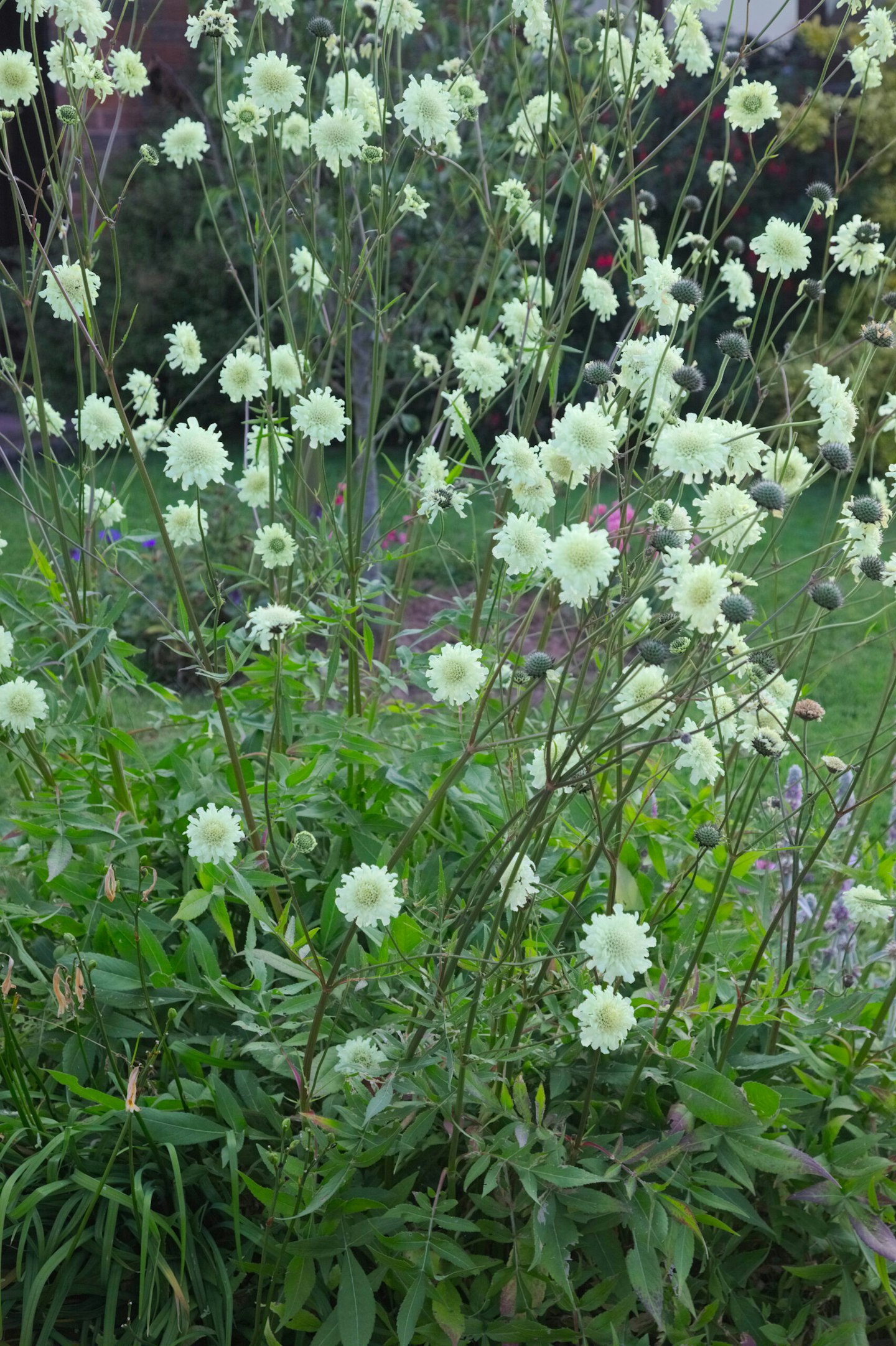
Late summer’s dazzling daisies
Daisies love a bright spot. The first to flower is a heliopsis called ‘Summer Nights’. Dark stems and foliage underpin clusters of yellow flowers, each with a reddish centre, so this one seems to smoulder in the border from June onwards. It’s followed by the drooping coneflower Ratibida pinnata. This perennial isn’t easy to find, but the tall, columnar Rudbeckia subtomentosa ‘Henry Eilers’ is. It’s drought tolerant, so will flower in dry summers, but use three to make a clump, or weave several through the border.
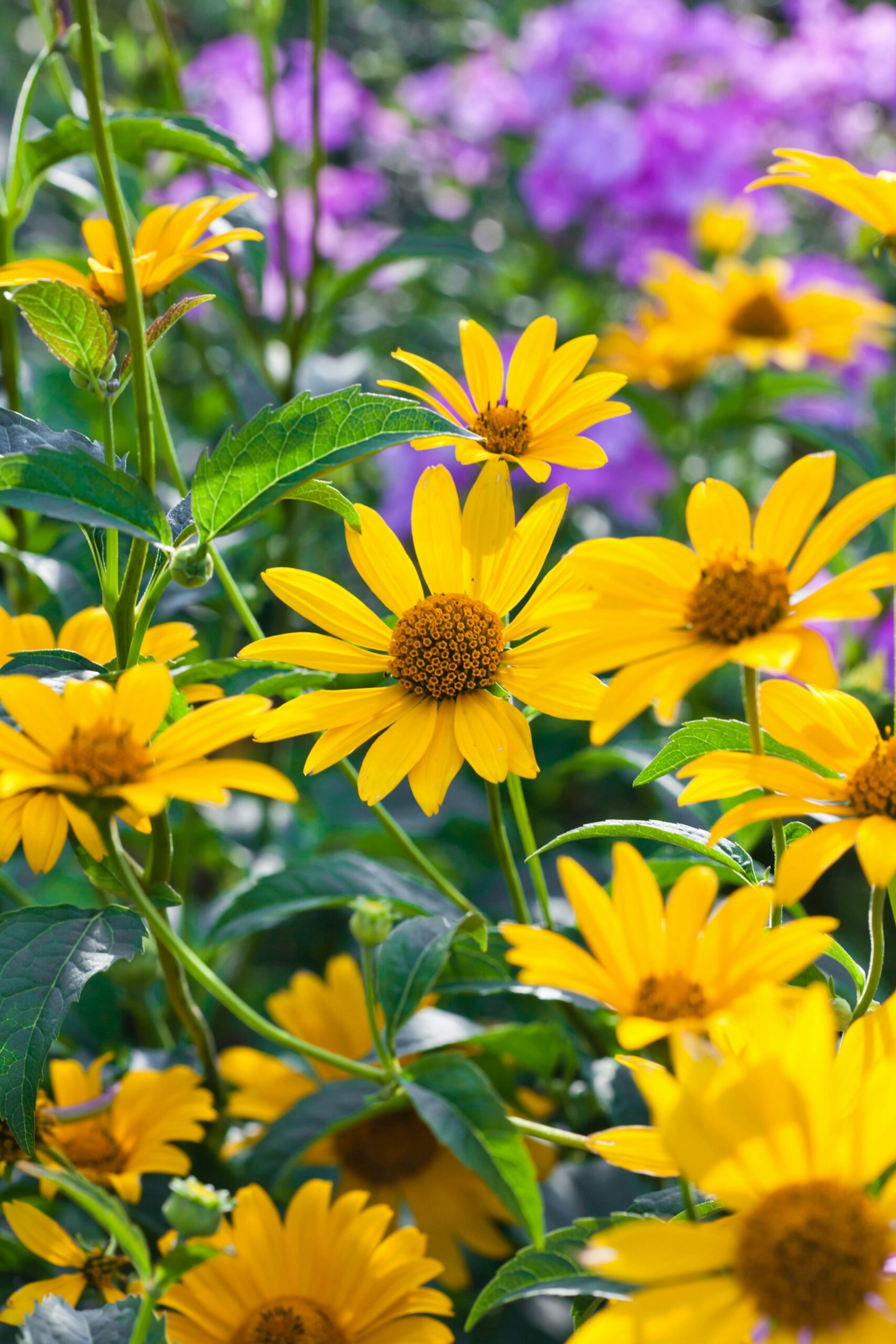
Some taller daisies are struggling with our drier summers, and helianthus ‘Lemon Queen’ is not enjoying them. But you can try one called ‘Sheila’s Sunshine’. It has similar lemon-yellow flowers to ‘Lemon Queen’ but it’s taller. This isn’t for a small garden because the roots travel.
All helianthus, whether annual or perennial, have flowers that chase the sun so consider your position for them. Brown-centred rudbeckias with golden-yellow flowers have horizontal blooms at knee height or shorter, and there are several on offer. Look out for ‘Little Goldstar’, a 30cm-high perennial. The most useful is the tall, clump-forming ‘Herbstsonne’, perfect with taller grasses.
Enjoying reading this article from Garden News magazine?
Read more like this every week with a subscription to Garden News. Garden News is Britain's most trusted voice in gardening with practical and informative advice features from experts, including Carol Klein. Plus, our step-by-step guides and how to tips and tricks are easy to follow and will ensure your garden is at its best - whatever the weather! View our latest subscription offers
